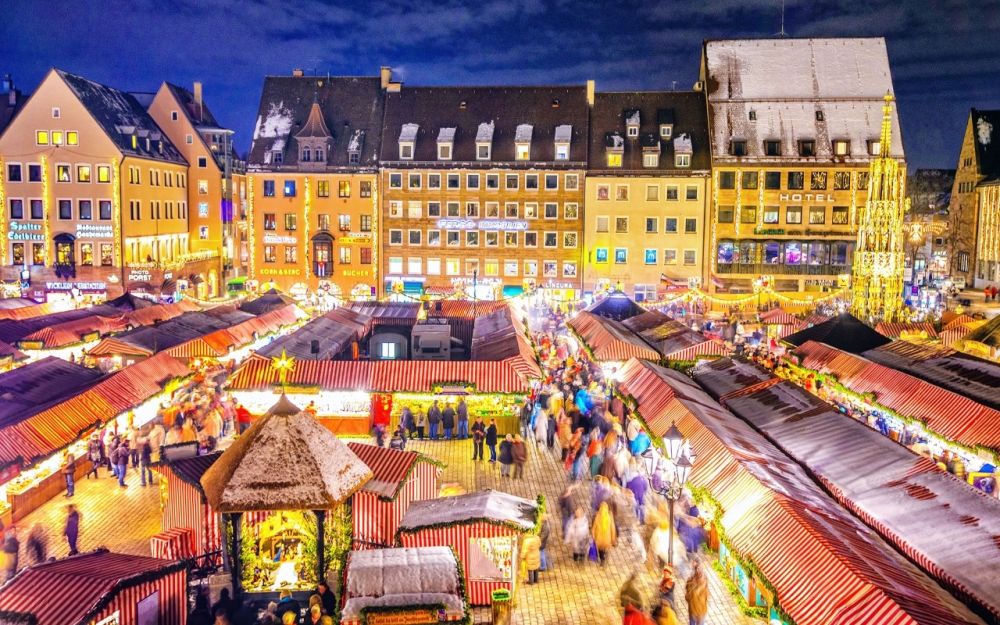

The Nuremberg Christmas Market is one of the oldest and most famous Christmas markets in the world. Known in German as "Christkindlesmarkt", this festive event has a rich history that dates back to the mid-16th century. The earliest record of this traditional market references a "Kindles-Marck" in a box of relics from the year 1628. However, the roots of the market are believed to reach even further back.
Nuremberg, with its medieval architecture and strong cultural heritage, provides an ideal backdrop for this historic market. The Christmas Market traditionally opens on the Friday before the first Sunday of Advent, marking the start of the festive season.
Over the centuries, the Nuremberg Christmas Market has grown in size and popularity. It went through various phases of history, surviving turbulent times, including wars and economic depressions. Post World War II, the market became a symbol of peace and reconciliation and has since seen a significant rise in international visitors.
The charming stalls, offering everything from traditional German crafts, toys, and ornaments to the famous Nuremberg Lebkuchen (gingerbread), sausages, and mulled wine, draw tourists and locals alike. Additionally, the "Sister Cities Market" reflects Nuremberg's international connections, with stalls from all over the world presenting their unique crafts and culinary specialties.
The Nuremberg Christmas Market is not just a tourist attraction but an essential part of the city's cultural heritage. As of the latest trends, sustainable tourism and local traditions are increasingly highlighted. There is a special focus on environmentally friendly practices, such as reducing plastic waste and encouraging the use of natural materials.
Each year, the market is opened by the "Christkind," a symbolic figure that is played by a local woman selected through a public invitation and casting process. The role of the Christkind is an honored tradition in Nuremberg and is a central part of the market's opening ceremony.
The Nuremberg Christmas Market has a significant impact on the city's tourism. It attracts over two million visitors every year, generating substantial revenue for local businesses. The market's popularity has paved the way for themed tours, attractions, and other festive events throughout the city during the holiday season.
In addition to the market itself, Nuremberg's rich history, including landmarks such as Nuremberg Castle and the Albrecht Dürer House, also play a vital role in attracting visitors to the city. When combined with the Nuremberg Christmas Market, they provide a deeply immersive and festive experience, popular among both international tourists and Germans traveling domestically.
Today's tourists seek authentic and immersive experiences, and the Nuremberg Christmas Market delivers just that. Balancing tradition with modern appeals and sustainability, it continues to be a leading winter attraction in Germany, celebrated for its enchanting atmosphere, hand-crafted goods, and festive cheer.